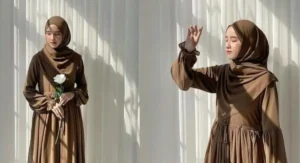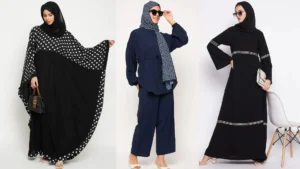The development of the fashion world never stops innovating. One segment that is increasingly showing its existence is Muslim fashion. In the midst of the flow of modernization and globalization, Muslim fashion trends continue to change, both in terms of design, materials, and how to wear them. However, behind the glitter of the fashion world, there is a fundamental question that continues to echo: to what extent do Muslim fashion trends remain based on Islamic sharia values?

Muslim fashion today is not just a need for clothing that covers the aurat, but has become an identity, self-expression, and even a symbol of social status. Various fashion shows, both at home and abroad, often present the works of Muslim designers who display simple but stylish clothing. Indonesia, as a country with the largest Muslim population in the world, is also a global Muslim fashion mecca. This can be seen from the Indonesia Muslim Fashion Festival (MUFFEST) and Indonesia Sharia Economic Festival (ISEF) which routinely display the creations of local designers with a touch of sharia.
From a sharia perspective, clothing for Muslim women has clear rules. Islam requires women to cover their private parts completely, be loose, not transparent, and not resemble men’s clothing or resemble non-Muslim clothing. Clothing should also not invite lust or give rise to tabarruj (excessive decoration). In other words, the main function of Muslim clothing is to maintain personal honor and purity.
However, the reality on the ground shows a shift in meaning in understanding Muslim fashion. Many Muslim women prioritize aesthetic aspects over sharia functions. This phenomenon can be seen from the rise of tight clothing models, wearing hijab but wearing skinny pants or short tunics, to hijabs with excessive twists and accessories. Ironically, all of this is claimed to be part of the Muslim fashion trend.

Nur Rofiah, a lecturer and expert in Islamic gender studies, said that Muslim clothing should not only be beautiful to look at, but also foster spiritual awareness. “Muslim clothing is not just about fabric and design, but also a reflection of submission to Allah,” she said in a bold seminar entitled “Muslim Clothing in the Digital Era”.
It is undeniable that Muslim fashion trends are also influenced by urban lifestyles and the commercialization of the fashion industry. Social media plays a major role in shaping new clothing standards among the younger generation. Hijab influencers and Muslim Instagram celebrities have contributed to popularizing a style of dress that sometimes invites sharia values. The image of the ideal Muslim woman is often constructed based on visual standards alone—fashionable, slim, and fair-skinned—rather than on personality or morals.
However, not all Muslim fashion trends are negative. Many designers and industry players are trying to combine sharia elements with modern aesthetics proportionally. Fashion labels such as Shafira, Elzatta, and Zaskia Mecca have succeeded in presenting clothing that is sharia-compliant but still trendy and elegant. This success shows that sharia does not hinder creativity, as long as it does not violate the boundaries set by religion. Moreover, Muslim fashion trends that are in accordance with sharia can be an effective means of preaching. With an attractive but still polite appearance, a Muslim woman can be a role model in social life. Sharia clothing that is packaged with full confidence and pride can change society’s perception of Islam which has so far been considered conservative.
Therefore, it is important for Muslim women to understand the essence of dressing in Islam as a whole. It is not enough to just follow the trend, but it must be accompanied by adequate religious knowledge. Parents, educators, and religious figures also have a strategic role in guiding the younger generation so that they do not get caught up in a false lifestyle.

The government should also support the sharia-based Muslim fashion industry, through regulation, education, and coaching for business actors. Moreover, this sector has great economic potential. According to the Global Islamic Economic Indicator report, the world’s Muslim fashion market is estimated to reach 311 billion US dollars by 2024.
In closing, Muslim fashion trends are a dynamic that cannot be avoided in the modern era. However, this dynamic should not distance Muslim women from the essence of their religious teachings. The balance between sharia and lifestyle should be the mainstay. The ideal Muslim fashion is one that not only pleases the eye, but also soothes the soul. Because in truth, dressing is an act of worship that reflects piety, not just style.
